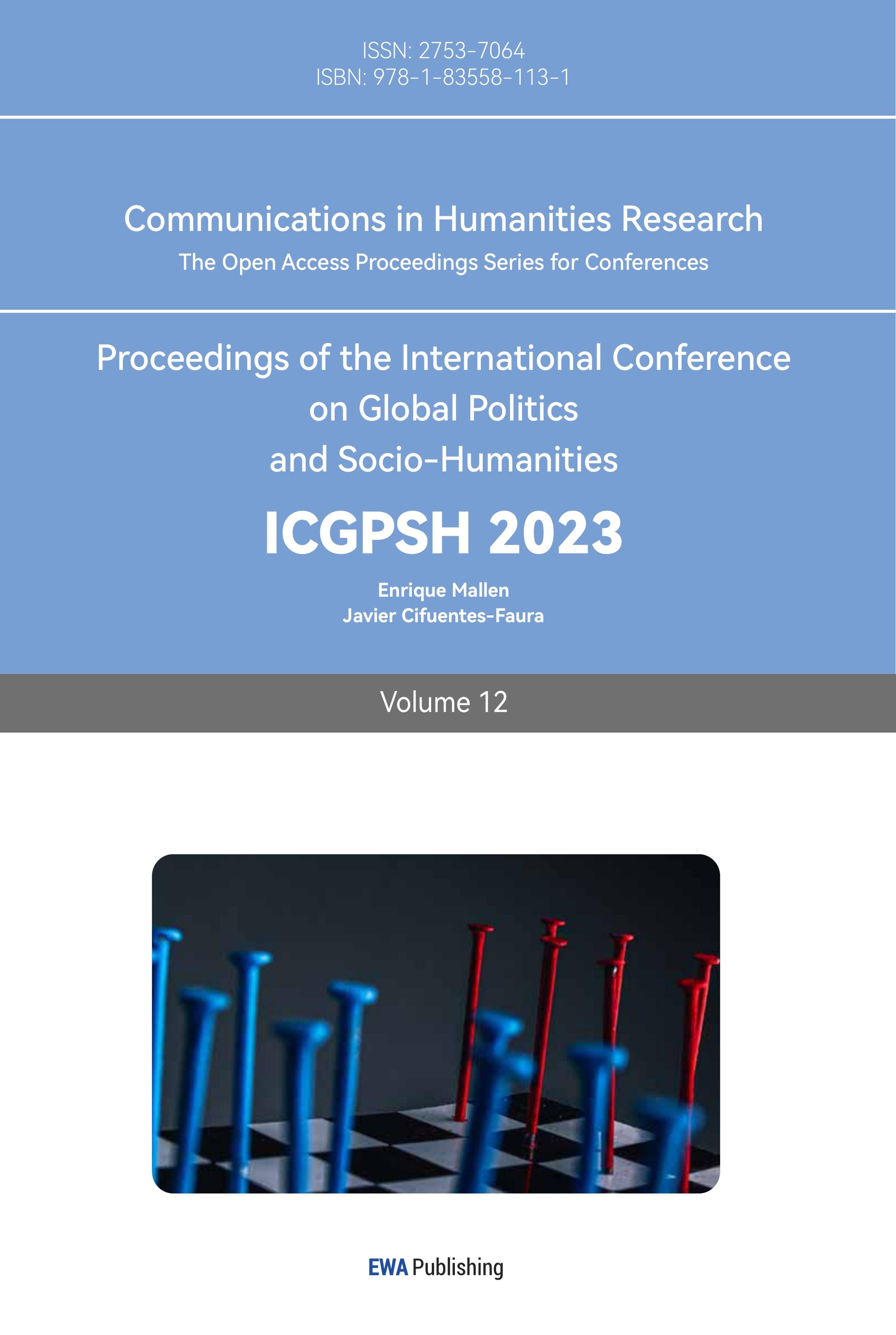1.Introduction
In recent years, with the rapid development of new media and new technologies such as mobile Internet and short videos, people’s psychology and behaviour have undergone certain changes. According to the 50th Statistical Report on China’s Internet Development, as of June 2022, the scale of short video users in China was 962 million, accounting for 91.5% of the overall Internet users. As one of the groups of short video users, college students’ psychology and behaviours have been profoundly influenced by short videos [1]. As one of the most popular short video platforms in the world, TikTok has a huge user base, and its popularity among young people and college students cannot be ignored. TikTok integrates social networking, music, short videos and other multi-functions organically, and provides a stage for college students to show themselves, express their creativity and share their lives. At the same time, TikTok is also a double-edged sword, under the influence of its fragmented characteristics and algorithmic recommendation technology, it is easy to have some negative impacts on contemporary college students.
Current literature in the field of short-form video has seen a number of studies on the impact of TikTok on the popular sphere, for example, Diah, Prahastiwi, and Sudarmo have deeply explored the impacts and connections between the popular and TikTok [2]. Danielle, Dawn and Szymanski, explored the relationship between short-form video and appearance anxiety [3]. Menon explored people’s motivations for watching and posting short videos [4], and Don and sha examined how short videos affect adolescents and their depression, anxiety, and memory loss [5]. However, there are fewer studies in the area of influence on college students. Therefore, it is very important to combine the previous literature to make reasonable suggestions on how to correctly deal with the positive or negative impacts of short videos on college students as a group.
In order to address this deficiency, we firstly crawled the data from relevant websites and analysed the specific preference data of college students and found that games and music are the two main preferences of TikTok among college students. At the same time, we conducted the “Questionnaire on the Impact of TikTok on College Students” to collect questions on the objective use of TikTok by college students in the form of single-choice, multiple-choice, and fill-in-the-blank questions. A total of 38 questions were asked. The data was collected by filling out the questionnaire on the internet. Through the combination of these two forms, four main influences on college students are summarized, namely, entertainment and recreation, social interaction and expression, influence on study and time management, media communication and public opinion, and reasonable explanations and suggestions are given through specific analyses of these four points.
2.Questionnaire Design and Data Description
2.1.Questionnaire Design
In the design of the questionnaire, we mainly conducted a comprehensive survey through objective usage (e.g., frequency of opening, time of use, whether it affects daily life, etc.) and subjective usage feelings (e.g., initial intention of downloading, favourite content, psychological expectations, etc.).
2.2.Data Description
The questionnaire was sent to the research object by using mobile phone WeChat and public number to push the questionnaire, and 148 valid questionnaires were returned, and a total of 148 college students participated in the survey. The main target of the survey is freshman to senior students. 89.98% of the students said that they had contacted the short video platform, which is also close to the 50th China Internet Development Statistics Report, which mentioned that 91.5% of the overall Internet users. See Figure 1.

Figure 1: Questionnaire: Have you been exposed to short videos.
3.Impact of Short Videos
3.1.Entertainment and Recreation
We crawled through the data to search for searches on typical high-frequency terms for college students. A large amount of arithmetic data shows that games and music are the two hotspots that young people pay attention to on TikTok. Games and music are a source of joy for young people as they unleash their minds and hearts. They can get countless happiness through games and music as well as find their own island in these colourful worlds. Apart from that, fitness, campus, graduation, college entrance exams and cross-dressing and face changing are all pleasing to them. The search hotspots of young people on TikTok show that they are a group of pioneers who love to have fun but also love life. See Figure 2
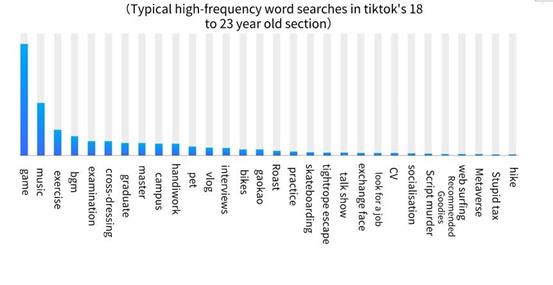
Figure 2: Typical high-frequency word searches in tiktok’s 18 to 23 year old section.
Even though the age of 18-23 years old college students is not the largest number of people, but the largest proportion of their preference degree, which shows that college students love games, and according to the data, 57% of the crowd is male, 43% of the crowd is female, and the TGI (Target Group Index=Proportion of the target group with a certain characteristic / Proportion of the overall group with the same characteristic] * standardized number. Proportion / Proportion of groups with the same characteristic in the whole] *Standard number) value of men is larger than that of women. When focusing on gaming topics, they tend to focus on TikTok games, game commentaries and some some popular games of the moment. The release of the 2019 Social Blue Book and the report on China’s social situation, hosted by the Chinese Academy of Social Sciences (CASS), was held, and the report showed that nearly 40% of college students have paid attention to Netflix, and 8% of them check Netflix updates almost every day. In terms of sought-after netroots types, 41.7% of college students pay attention to gaming netroots, and 31.6% pay attention to beauty netroots. For these college students who follow the dynamics of webstars, the types of webstars they follow have more similarities with the types of live broadcasts. Gaming and beauty are undoubtedly the most popular types of webstars among college students, with 41.7% of college students paying attention to gaming webstars and 31.6% of college students paying attention to beauty webstars. See Figure 3 Figure 4.
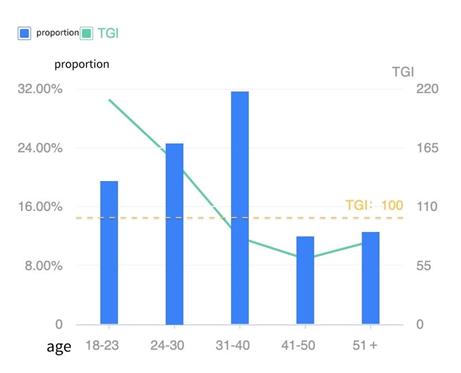
Figure 3: Age distribution about game.
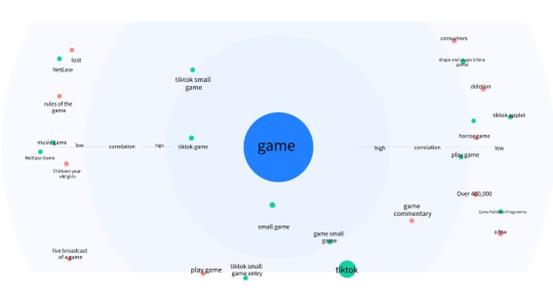
Figure 4: Game-related terms.
The 18–23-year-olds have the highest percentage and TGI values, indicating that both the number of people and their preferences like music, especially bgm, and according to the keyword correlation, they prefer dynamic and transcendental genres. This is often also related to their academic pressure, listening to music in their spare time is a great relaxation for their body and mind. See Figure 5
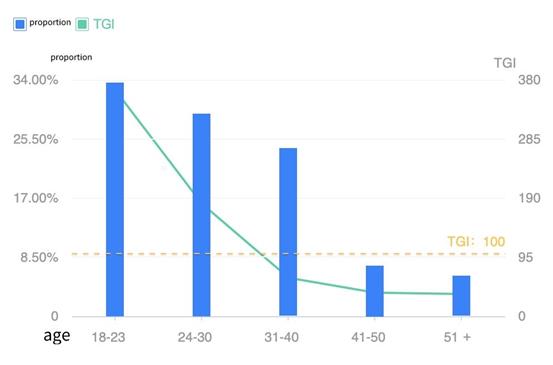
Figure 5: Age distribution about music.
3.2.Social Interaction and Expression
Short video platforms provide social interaction features such as commenting, liking, sharing, and following, enabling users to interact and express themselves with other users. Users can communicate with other users through comments and private messages to establish social relationships. 69.59% of all respondents reported that they have posted comment interactions. See Figure 6 for details.
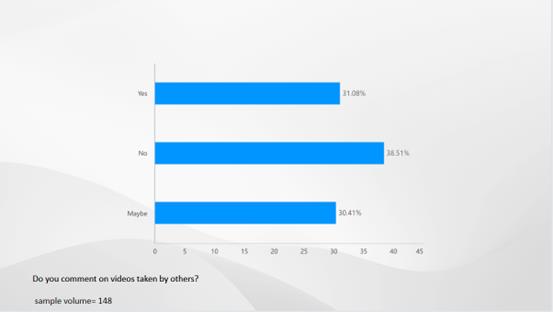
Figure 6: Questionnaire: Do you comment on videos taken by other?
College students have rich social behaviours and expressions on short video platforms. They display their talents, interests and life experiences by posting personal short videos. This way of expression can satisfy their need to show themselves and also arouse the interest and resonance of other users. 68.92 per cent of the respondents said they had recorded videos. This largely matches the data of those who would comment above. However, 25.68% of this group have recorded but not uploaded videos. We analysed that there may be two aspects that lead to this result.1 It is to protect their social privacy 2. Making videos is simply to please themselves. See Figure 7.
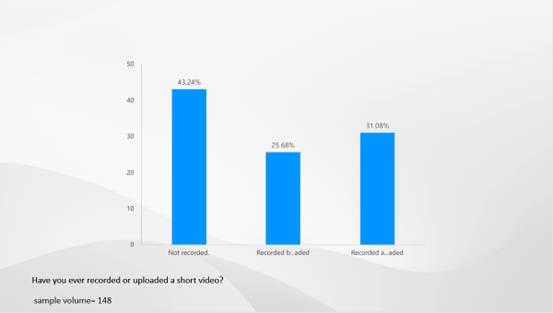
Figure 7: Questionnaire: Have you ever recorded or uploaded a short video?
Positive impact: 1. Enhancement of social skills. Through short videos, most college students learn about what young people are interested in, and the common language among peers increases. The production of content and interaction between users have honed college students’ communication and collaboration skills and expanded their social scope.2. Keeping abreast of social changes. With the huge scale of users, short videos have become more mature in all aspects, and have formed a network ecosystem, which is increasingly becoming a tool for college students to understand social changes.
Negative impacts: 1. It may lead to excessive attention to the likes and comments of others, thus creating dependence on and anxiety about one’s own sense of value. 2. Excessive investment in short video social interaction may lead to a reduction in real-life social activities, affecting face-to-face communication and the establishment of intimate relationships. 3. It may cause some college students to excessively pursue short-term virtual fame and traffic, neglecting the pursuit of real interest and value.
3.3.Impact on Study and Time Management
The survey results show that 68.24% of the respondents expressed that they feel like time is not passing when using short video platforms. 62.84% of college students watch short videos between 17:00 and 24:00, and only 12% of college students are not affected by short videos in their normal daily routines. It can be seen that short videos have a significant impact on the lives and studies of college students. Please refer to Figures 8, 9, and 10 for more details.
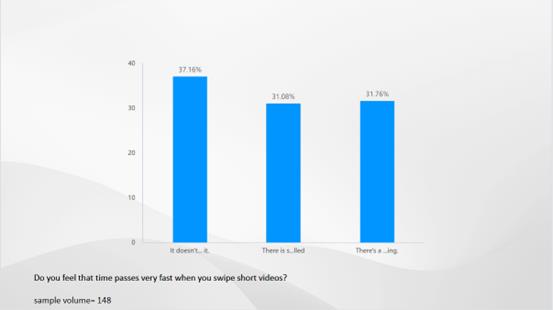
Figure 8: Questionnaire: Do you feel that passes very fast when you swipe short videos?

Figure 9: Questionnaire: What time of day do you usually watch short videos?
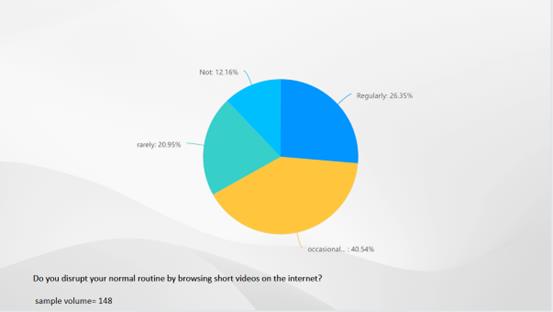
Figure 10: Questionnaire: Do you disrupt your normal rountine by browsing short videos on the internet?
There are three reasons why college students are addicted to short videos: 1. The content is entertaining. Many short videos are only a few seconds long, but they have catchy “brainwashing songs” and eye-catching elements that gradually increase the brain’s tolerance for information stimulation or abruptly stop at the climax, stimulating you to continue watching. Some videos also convey a knowledge point within a short period of time, giving people a sense of accomplishment in accomplishing something significant in a short time, thus continuing this behavior. 2. The algorithm for recommendations. Short video apps use AI to recommend content based on big data and personal browsing habits. The more interesting content you swipe, the more you get, and the pleasure continues endlessly, leaving you wanting more. 3. It is an emotional resonance. Many people see and relate to their own similar experiences in the videos or in the comments section, using it as a safe “haven” where they can empathize and gain a unique emotional experience [6].
How can college students control their viewing time of short videos? 1. First, set time limits: Set time limits for browsing short videos to avoid excessive use. You can use applications or timers to remind yourself of the time spent on short video platforms and set reasonable time intervals. According to a survey, 70.27% of people have received rest reminders through app notifications. Among those who have received push notifications, 74.32% choose to take a break, while only 25.68% do not choose to rest. This proves that app notifications for rest reminders are effective and necessary to some extent. 2. Use time management tools: Utilize time management tools and time-tracking applications to help college students better manage their time. These tools can help them focus and plan their study time effectively. 3. 20.95% of users feel annoyed when they see rest reminders, and 17.57% choose to ignore them. 66.89% of respondents believe that educational content should be added to rest reminders. Therefore, it is important to express rest recommendations to users in a reasonable manner [7].
3.4.Media Communication and Public Opinion Guidance
According to the survey, only 17.57% of respondents stated that they would not feel appearance anxiety due to short videos, and 16.89% said they would not be influenced by short videos and feel dissatisfied with their lifestyle. In the virtual world created by short videos, there are various videos related to college students, with some videos for entertainment, imitation, and seeking excitement constantly impacting the eyes of college students [8]. Short videos are like a virus with astonishing spreading power, causing some college students who have boring lives and limited social channels to become addicted and unable to extricate themselves from the delusion of mental pleasure. At the same time, everyone wears a mask on the internet, presenting carefully selected content, which creates an illusion for college students that others’ success is easy to achieve, leading to gradual complacency and impatience. There are a large number of videos with improper values, which are not conducive to shaping the three perspectives of college students. Short videos adopt the content production model of UGC (user-generated content), where everyone is a spreader. However, short video users are numerous, and their backgrounds are complex, resulting in varying video quality, and the platform’s oversight is not strict, leading to the transmission of content that does not conform to the core social values, which is not conducive to cultivating the three perspectives of college students [9]. See Figure 11and Figure 12 for details.
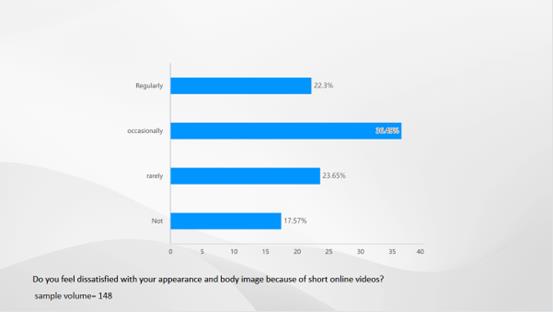
Figure 11: Questionnaire: Do you feel dissatisfied with your appearance and body image because of short online videos?
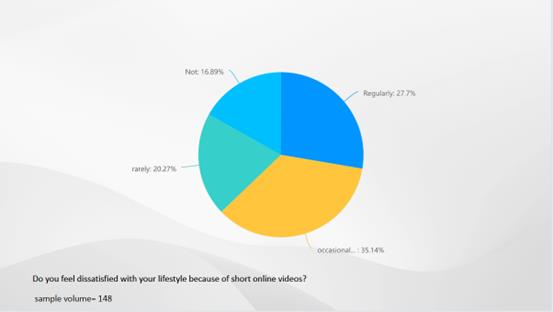
Figure 12: Questionnaire: Do you feel dissatisfied with your lifestyle because of online videos?
At the same time, short videos also influence the social values of college students. In the realm of short videos, positive cultural forms and negative cultural forms coexist. On the one hand, the rise and development of short video platforms have further broadened the space for the dissemination of mainstream ideological culture. With the rapid development of integrated media, mainstream media and various university WeChat official platforms have successively launched video accounts and live streaming accounts. Some universities have joined the Douyin platform and opened official Douyin accounts, pushing a large number of mainstream value-based short video content. If college students can actively watch and participate in the dissemination of positive and high-profile mainstream value-based live broadcasts and short videos, it will promote the cultivation and practice of socialist core values such as patriotism, dedication, integrity, and kindness. On short video platforms like Douyin, you can see the presence of many trustworthy official media, such as the People’s Daily Douyin account, which has accumulated over 150 million followers as of May 2022. In many major events, through real event reporting and the narration of positive and uplifting short stories, positive and optimistic thoughts are conveyed, emphasizing the influence on young people’s upward, hardworking, and studious spirits [10].
4.Suggestions
4.1.For College Students
College students should establish a sense of moderate entertainment, and take short videos as a supplement to relaxation after study; they can take short videos as an extension platform for learning, and use short videos to enrich extracurricular knowledge and life skills; they should understand the difference between virtual and real, and pay attention to practice; they should pay attention to improving self-control and media literacy, and effectively identify information, and refrain from rumour-mongering, rumour-spreading, and rumour-believing; they should play short videos with thinking, and have their own opinions, and refrain from following and imitating the video blindly. and imitate.
4.2.Universities
How students can effectively identify the values output from short videos is not only a problem for students to consider, but also a responsibility for colleges and universities. Colleges and universities can combine online and offline courses to cultivate media literacy among college students; register official accounts for short videos, set up special operation teams on campus, update school activities to short videos in a timely manner, and also choose to broadcast live interactions, and actively adopt a variety of ways that are easy to be accepted by students to improve their influence among students.
4.3.Short Video Platform
Short video platforms should strengthen the audit of video content and strive to improve the overall quality of videos on the platform. It is recommended to establish a reward and punishment mechanism for content publishers, rewarding producers of high-quality content and increasing the cost of penalties for publishers spreading vulgar values and rumour mongering; and set up a timeline of viewing duration reminders in the sliding interface to make it clear to the user the amount of time that has been spent.
5.Conclusion
With the continuous development of short-time video platforms, they have become an indispensable learning and entertainment tool in college students’ study life. But not only short-time platforms, but new forms of media are also emerging, and in the face of the possible negative impact of these contents, college students should improve their media literacy and self-control as much as possible. Although the influence on college students has two sides, we don’t need to be too anxious about the negative influence. As adults, college students have the ability to make certain choices and judgements, and new media platforms such as Jitterbites should make more efforts in reviewing content, avoiding vulgar content and increasing the number of high-quality videos without abandoning the forms that are popular with young people. Together with the benign guidance of the relevant departments, it will reduce to a certain extent the short video-induced problems of college students.
Authors Contribution
All the authors contributed equally, and their names were listed in alphabetical order.
References
[1]. China Social Science Net. http://www.cssn.cn, last access on 2023/7/20
[2]. Anggraini, D., Utari, P., and Sudarmo. (2023) Information Needs on TikTok: Between Followers and Viewers. Journal of Social and Political Sciences, 6(1), 61- 68.
[3]. Mink, D. B., and Szymanski, D. M. (2022). TikTok use and body dissatisfaction: Examining direct, indirect, and moderated relations. Body Image, 43, 205-216.
[4]. Menon, D. (2022). Factors influencing Instagram Reels usage behaviours: An examination of motives, contextual age and narcissism. Telematics and Informatics Reports, 5, 100007.
[5]. Sha, P., and Dong, X. (2021) Research on adolescents regarding the indirect effect of depression, anxiety, and stress between TikTok use disorder and memory loss. International journal of environmental research and public health, 18(16), 8820.
[6]. Wang, Y. W. (2022) Exploring the formation mechanism of TikTok app information cocoon from the perspective of university student users. Sound Screen World (9), 5.
[7]. Hartung, C., Ann Hendry, N., Albury, K., Johnston, S., and Welch, R. (2023) Teachers of TikTok: Glimpses and gestures in the performance of professional identity. Media International Australia, 186(1), 81-96.
[8]. Zhao, D. F., and Wang, X. S. (2019) The influence of fragmented communication on the ideological formation of college students and countermeasures--Taking “TikTok app” as an example. Guangxi Social Science (9), 6.
[9]. Zhang, D. (2021) Ruminating on the influence of social short video app on college students’ value formation and countermeasure analysis—TikTok app as an example. Digital Communication World (6), 2.
[10]. Chen, Y. T. (2020) Exploration of online ideological and political education for college students based on TikTok app. Journal of Inner Mongolia Normal University: Education Science Edition (3), 7.
Cite this article
Hu,X.;Li,Y. (2023). The Impact of Short Videos on University Students - Evidence from Tiktok. Communications in Humanities Research,12,273-284.
Data availability
The datasets used and/or analyzed during the current study will be available from the authors upon reasonable request.
Disclaimer/Publisher's Note
The statements, opinions and data contained in all publications are solely those of the individual author(s) and contributor(s) and not of EWA Publishing and/or the editor(s). EWA Publishing and/or the editor(s) disclaim responsibility for any injury to people or property resulting from any ideas, methods, instructions or products referred to in the content.
About volume
Volume title: Proceedings of the International Conference on Global Politics and Socio-Humanities (ICGPSH 2023)
© 2024 by the author(s). Licensee EWA Publishing, Oxford, UK. This article is an open access article distributed under the terms and
conditions of the Creative Commons Attribution (CC BY) license. Authors who
publish this series agree to the following terms:
1. Authors retain copyright and grant the series right of first publication with the work simultaneously licensed under a Creative Commons
Attribution License that allows others to share the work with an acknowledgment of the work's authorship and initial publication in this
series.
2. Authors are able to enter into separate, additional contractual arrangements for the non-exclusive distribution of the series's published
version of the work (e.g., post it to an institutional repository or publish it in a book), with an acknowledgment of its initial
publication in this series.
3. Authors are permitted and encouraged to post their work online (e.g., in institutional repositories or on their website) prior to and
during the submission process, as it can lead to productive exchanges, as well as earlier and greater citation of published work (See
Open access policy for details).
References
[1]. China Social Science Net. http://www.cssn.cn, last access on 2023/7/20
[2]. Anggraini, D., Utari, P., and Sudarmo. (2023) Information Needs on TikTok: Between Followers and Viewers. Journal of Social and Political Sciences, 6(1), 61- 68.
[3]. Mink, D. B., and Szymanski, D. M. (2022). TikTok use and body dissatisfaction: Examining direct, indirect, and moderated relations. Body Image, 43, 205-216.
[4]. Menon, D. (2022). Factors influencing Instagram Reels usage behaviours: An examination of motives, contextual age and narcissism. Telematics and Informatics Reports, 5, 100007.
[5]. Sha, P., and Dong, X. (2021) Research on adolescents regarding the indirect effect of depression, anxiety, and stress between TikTok use disorder and memory loss. International journal of environmental research and public health, 18(16), 8820.
[6]. Wang, Y. W. (2022) Exploring the formation mechanism of TikTok app information cocoon from the perspective of university student users. Sound Screen World (9), 5.
[7]. Hartung, C., Ann Hendry, N., Albury, K., Johnston, S., and Welch, R. (2023) Teachers of TikTok: Glimpses and gestures in the performance of professional identity. Media International Australia, 186(1), 81-96.
[8]. Zhao, D. F., and Wang, X. S. (2019) The influence of fragmented communication on the ideological formation of college students and countermeasures--Taking “TikTok app” as an example. Guangxi Social Science (9), 6.
[9]. Zhang, D. (2021) Ruminating on the influence of social short video app on college students’ value formation and countermeasure analysis—TikTok app as an example. Digital Communication World (6), 2.
[10]. Chen, Y. T. (2020) Exploration of online ideological and political education for college students based on TikTok app. Journal of Inner Mongolia Normal University: Education Science Edition (3), 7.





